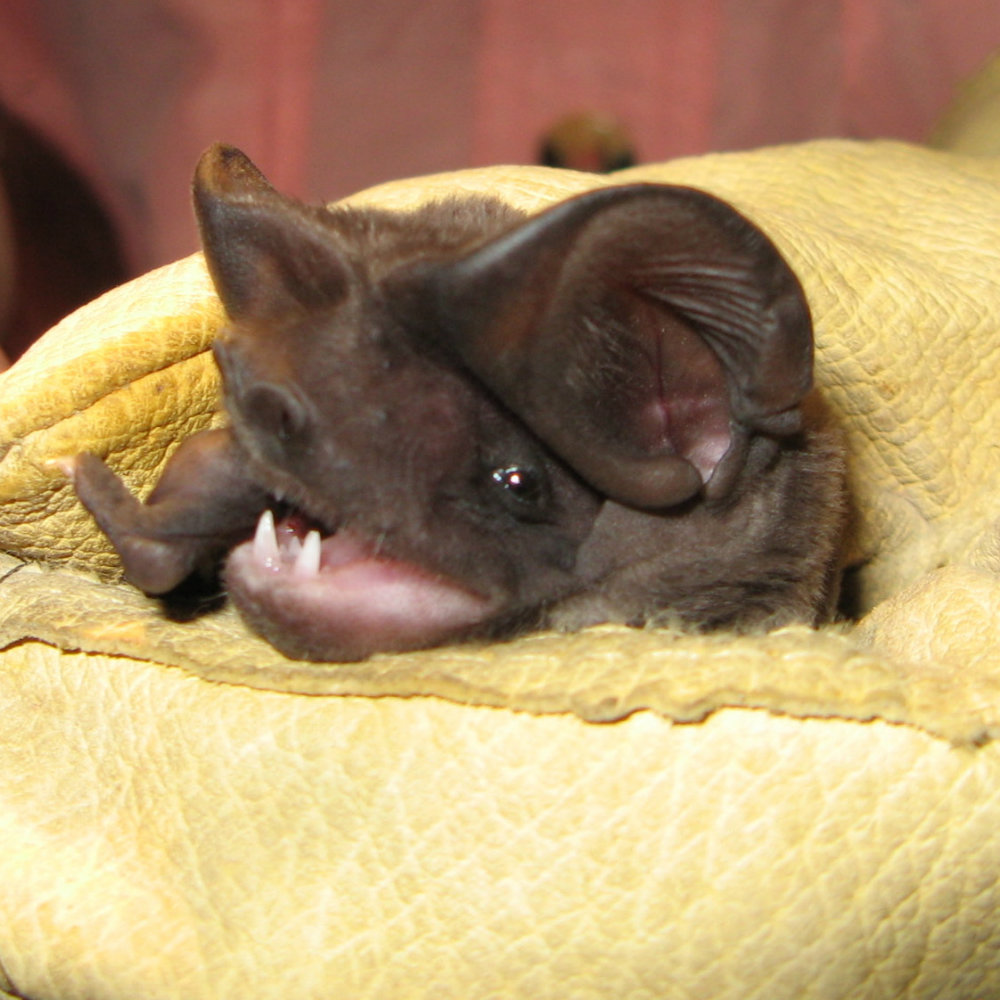
Halloween comes around once a year, but for Holly Ober, an interest in a bat found nowhere else in the world but South Florida is a year-round opportunity to study the unique mammal.
The Florida Bonneted bat, one of the rarest species in the world, nestles in tree cavities, palms and buildings in only a few counties in the state. The largest bat in Florida with a wing span of 20 inches, its ears point forward over its eyes, and its fur ranges in color from brown to gray, said Ober, an associate professor in the department wildlife ecology and conservation who works at the University of Florida Institute of Food and Agricultural Sciences North Florida Research and Education Center in Quincy.
“The Florida Bonneted bat was listed as federally endangered in 2013, and since then interest has grown considerably,” Ober said. “We don’t even know the exact geographic distribution or what type of habitat the bat occurs in. We do know this bat can only be found in South Florida.”
Ober and Robert McCleery, a professor in the department wildlife ecology and conservation, are leading several projects to investigate the bat’s ecology. The team is using acoustic surveys to hear the bat at night throughout all of South Florida, she said. “Then we are looking at where the bats roost and what they feed on,” Ober explained.
In 2014, biologists at Avon Park Air Force Range found one natural roost site, the first sighting since 1979. Since then, Ober’s team has found two more sites: one in Big Cypress National Preserve in Collier County and the other in Babcock Webb Wildlife Management Area in Charlotte County. “We are trying to find out if they roost primarily in trees or are they more likely to make their homes in manmade structures,” she said.
A second part of the project is to observe population trends, Ober said.
“Over the course of the past 50 years, researchers have seen or heard very few individual bats, so we have no idea if they are increasing or doing poorly,” she said. “To determine if population trends are increasing or decreasing, we have to individually mark the bats with a passive integrative transponder, which is injected under the skin of the bat. When the bat is recaptured, we know if it stayed in the same roost over time, moved to a new roost or if it is a brand new bat we have never before seen.”
Ober and other scientists are also trying to develop a monitoring plan.
“There is no standard protocol for this, so we are working in Everglades National Park to compare different approaches,” she said. For example, team members are comparing the efficacy of putting an acoustic survey device on the roof of a car for three hours and driving, or putting such a device on a permanent post to survey in a single location for a much longer period of time.
Ober and other researchers are eager to learn more about the Florida Bonneted bat, which unlike other bats in Florida, gives birth many months of the year. And while many people only think about bats during Halloween, the mammals are vital to maintain ecological balance year-round, Ober said. “Bats consume a lot of insect pests. They are the most efficient predator of nocturnal insects,” she said.
While bats are fascinating, Ober cautioned that Floridians should leave the bat research to scientists.
“If you see a bat on the ground, it is either injured or ill,” she said. “Wear gloves to pick it up and take it to a county health department. If you handle a bat, it will try to bite you in self-defense. In rare instances, bats can have rabies.”